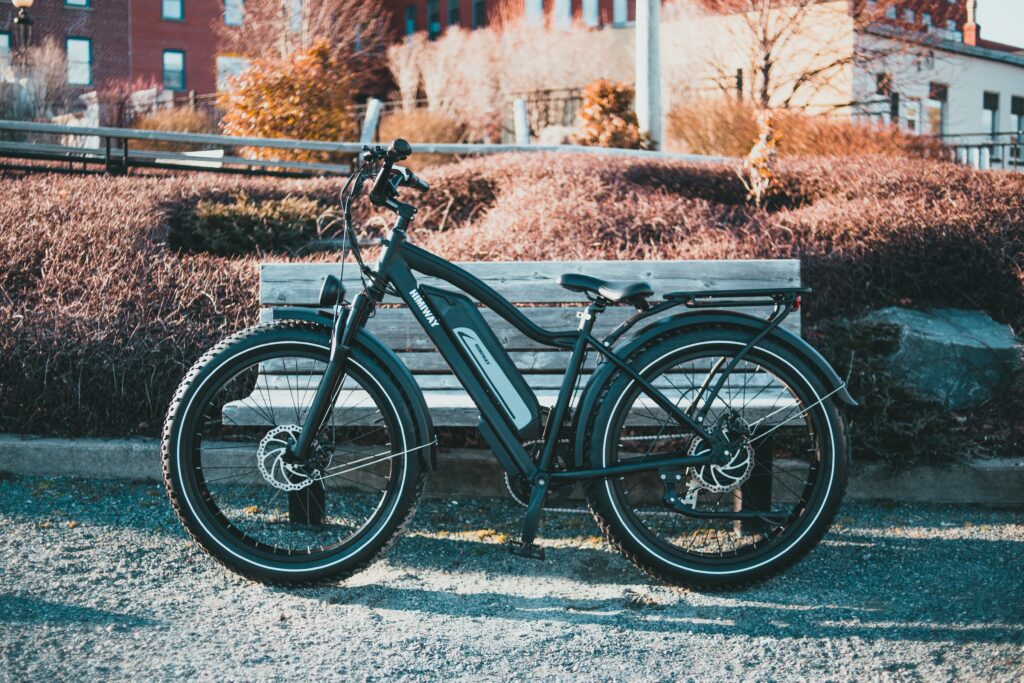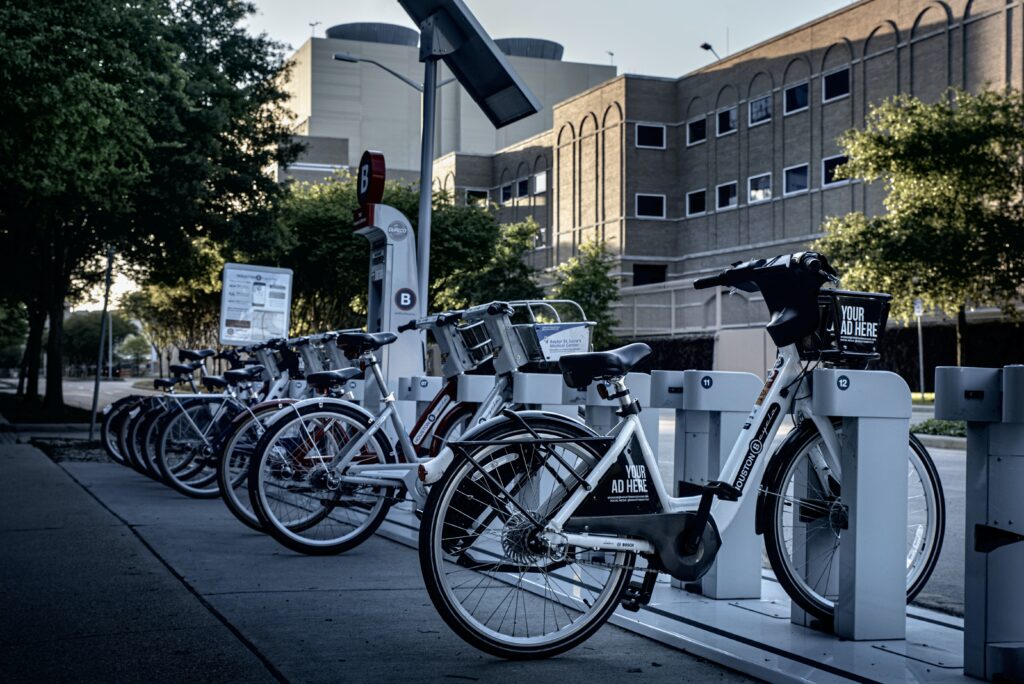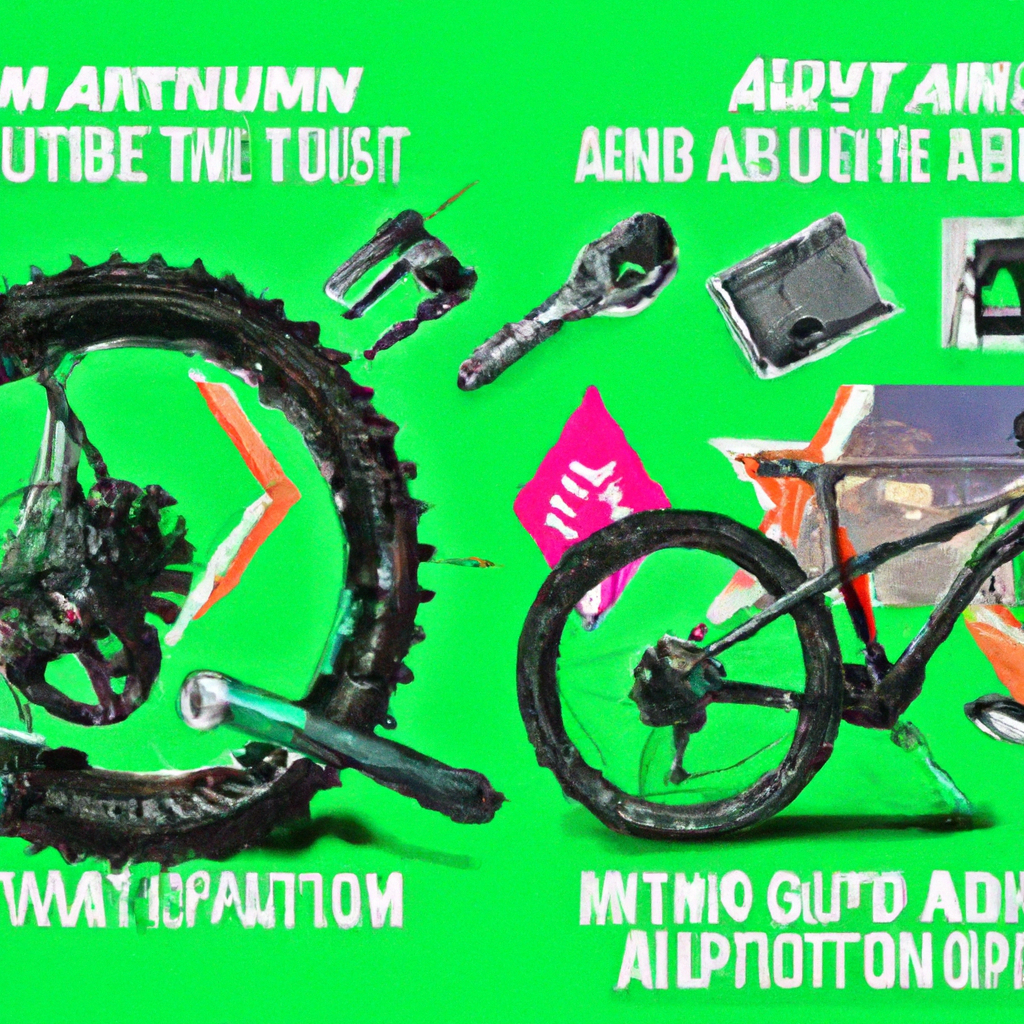Have you recently become interested in electric bikes but find yourself confused by all the unfamiliar terms and jargon? Don’t worry, we’ve got you covered! In this article, we will break down the key terms and phrases commonly used in the electric bike community, so you can navigate the world of e-bikes with confidence. Whether you’re a beginner looking to understand the basics or an experienced rider wanting to brush up on your knowledge, this article is here to provide you with the essential information you need. So let’s get started and demystify electric bike terminology!
Electric Bike
Electric bikes, also known as e-bikes, are bicycles that are equipped with an electric motor to assist with propulsion. They are becoming increasingly popular as a convenient and eco-friendly mode of transportation. In this article, we will break down the components of an electric bike, discuss the different types of motors and batteries used, explore the benefits of pedal assist and throttle systems, and examine the role of the controller and frame design. We will also provide an overview of pedelecs and e-bike classes, as well as offer tips to manage range anxiety.
1. Definition of an electric bike
An electric bike is a bicycle that is equipped with an electric motor to assist the rider in pedaling. Unlike a motorcycle or scooter, an electric bike still requires human power to move forward. The motor provides additional power to make pedaling easier and allows the rider to cover more distance with less effort. Electric bikes come in various designs and configurations, including both pedal-assist models and those with a throttle system.
2. Components of an electric bike
An electric bike consists of several key components that work together to provide an enhanced riding experience. These components include the motor, battery, pedal assist or throttle system, controller, and frame.

3. Advantages of electric bikes
Electric bikes offer numerous advantages over traditional bicycles and other modes of transportation. One of the most significant benefits of electric bikes is the assistance provided by the motor, allowing riders to travel longer distances and tackle hilly terrains with ease. Electric bikes also promote a healthier lifestyle by encouraging physical activity and reducing the reliance on cars or public transportation. They are also more environmentally friendly, emitting fewer pollutants compared to vehicles powered by fossil fuels. Moreover, electric bikes provide cost savings by reducing fuel expenses and maintenance costs associated with cars.
2. Motor
The motor is the heart of an electric bike and plays a crucial role in determining its performance. There are various types of motors used in electric bikes, including hub motors and mid-drive motors.
2.1 Types of motors used in electric bikes
Hub motors are the most common type of motor found in electric bikes. They are located in either the front or rear wheel hub and provide propulsion by driving the wheel directly. Hub motors are generally quieter and easier to maintain compared to mid-drive motors.
Mid-drive motors, on the other hand, are situated near the bike’s cranks and transfer power directly to the drivetrain. This design allows for better weight distribution and a more natural riding experience. Mid-drive motors are typically more expensive but provide superior hill-climbing ability and better overall performance.
2.2 Power and torque
The power and torque of an electric bike’s motor significantly impact its performance. Power is commonly measured in watts and determines how fast the bike can go. Higher wattage motors offer increased acceleration and top speed. Torque, measured in Newton-meters (Nm), refers to the twisting force that the motor can generate. A higher torque motor provides better hill-climbing ability and acceleration, making it suitable for off-road or hilly terrains.
2.3 Motor placement
Motor placement in an electric bike can affect its handling and balance. Front hub motors tend to provide a more stable and predictable ride, especially on flat surfaces. Rear hub motors offer better traction and are preferable for off-road riding or situations that require more power, such as climbing steep hills. Mid-drive motors, as mentioned earlier, provide a balanced weight distribution and a more natural riding experience.

3. Battery
The battery is another essential component of an electric bike as it provides the energy to power the motor. Different types of batteries are used in electric bikes, each with its own advantages and limitations.
3.1 Types of batteries used in electric bikes
The most common type of battery used in electric bikes is the lithium-ion battery. Lithium-ion batteries offer a high energy density, meaning they can store a significant amount of energy while remaining relatively lightweight. Other battery types used in electric bikes include lead-acid and nickel-cadmium batteries, although these are less common due to their lower energy density and weight.
3.2 Battery capacity and range
Battery capacity is typically measured in ampere-hours (Ah) and determines the amount of energy the battery can store. The higher the capacity, the longer the range of the electric bike. However, it is important to note that various factors can affect the actual range, including the weight of the rider, terrain, speed, and level of pedal assistance.
3.3 Charging and maintenance
Charging an electric bike’s battery is relatively simple, requiring only a standard power outlet. Most electric bikes come with a charger that can be plugged in directly. It is important to follow the manufacturer’s instructions regarding charging and avoid overcharging the battery, as this can reduce its overall lifespan.
Maintenance of the battery typically involves keeping it dry, avoiding extreme temperatures, and periodically checking the connections to ensure they are secure. Regularly inspecting the battery for any signs of damage or wear is also recommended.
4. Pedal Assist
Pedal assist, also known as electric assist or PAS (pedal-assist system), is a feature commonly found in electric bikes that provides assistance to the rider while pedaling.
4.1 How pedal assist works
Pedal assist works by automatically sensing the rider’s pedaling force and speed and providing an appropriate level of assistance from the motor. When the rider starts pedaling, the motor kicks in and adds extra power, making pedaling easier and faster. The assistance level can usually be adjusted, allowing riders to choose how much assistance they want from the motor.
4.2 Levels of pedal assist
Most electric bikes offer multiple levels of pedal assist, typically ranging from low to high. The lower levels provide minimal assistance, while the higher levels increase the motor’s power output. This allows riders to tailor the level of assistance to their preferences or the terrain they are riding on. Some electric bikes also come with a “turbo” mode that provides maximum assistance for rapid acceleration or climbing steep hills.
4.3 Benefits of pedal assist
Pedal assist offers several benefits to riders. Firstly, it makes pedaling easier, particularly on uphill sections or when carrying heavy loads. It also allows riders to cover greater distances without feeling fatigued, making it an excellent option for commuting or recreational purposes. Pedal assist encourages riders to exercise regularly, as they still need to pedal to activate the motor. Additionally, it can be more energy-efficient compared to throttle-based systems, as it only provides assistance when the rider is actively pedaling.

5. Throttle
A throttle system is an alternate method of controlling an electric bike’s motor without relying on pedal assist. Instead, riders use a hand-controlled throttle to dictate the level of power output from the motor.
5.1 Definition and function of a throttle
A throttle is a device typically located on the handlebars that allows riders to control the motor’s output by twisting or pressing it. By manipulating the throttle, riders can increase or decrease the power provided by the motor, similar to how one would control the accelerator on a motorcycle or scooter.
5.2 Different types of throttles
Throttles can come in various designs, including twist grips, thumb throttles, or trigger-style throttles. Twist grips are twisted like a motorcycle throttle to control the power output. Thumb throttles are pressed by the thumb, while trigger-style throttles are squeezed using the fingers. Each type offers its own advantages in terms of ergonomics and ease of use.
5.3 Pros and cons of using a throttle
One advantage of using a throttle is that it provides instantaneous motor power without the need for pedaling. This can be beneficial in situations where immediate acceleration is required, such as starting from a standstill or overtaking another cyclist. Throttles also allow riders to relax and rest their legs when desired, as they do not need to pedal continuously.
However, one drawback of relying solely on a throttle system is the decreased exercise component. As riders do not need to pedal to activate the motor, they may miss out on the physical fitness benefits that come with pedaling. Additionally, throttle systems can sometimes drain the battery faster, especially if used at maximum power continuously.
6. Controller
The controller is an integral part of an electric bike’s electrical system and is responsible for managing the motor, battery, and other electronic components.
6.1 Role of the controller in an electric bike
The controller acts as the brain of the electric bike, receiving input from the rider and various sensors and translating it into appropriate motor outputs. It monitors and regulates the power flow between the battery and motor, ensuring smooth and efficient operation. The controller also manages features such as pedal assist levels, throttle responsiveness, and any additional functionality specific to the electric bike.
6.2 Features and functionality
Controllers can vary in terms of their features and functionality, depending on the electric bike’s design and intended use. Advanced controllers may offer programmable settings that allow riders to customize their riding experience, such as adjusting acceleration rates, maximum speed limits, or even creating custom riding modes. Some controllers may also incorporate regenerative braking functionality, which charges the battery during braking or descending hills.
6.3 Importance of a good controller
Having a reliable and well-programmed controller is crucial for a smooth and enjoyable riding experience. A good controller should provide seamless integration between the rider’s input and the motor’s output, ensuring a responsive and intuitive ride. It should also offer appropriate power management to maximize battery life and provide accurate feedback and control over the various features of the electric bike.

7. Frame
The frame of an electric bike plays a vital role in providing stability, durability, and comfort. It also determines the overall riding characteristics and handling of the bike.
7.1 Different types of frames for electric bikes
Electric bikes can have various frame designs to suit different riding preferences and purposes. Some common types of frames include step-through frames, diamond frames, and folding frames.
Step-through frames are characterized by a low top tube that allows riders to easily step onto the bike without having to swing their leg over the frame. This design is particularly favored by riders who value ease of mounting and dismounting, such as those with mobility issues or who frequently make frequent stops.
Diamond frames, similar to traditional bicycle frames, feature a top tube that slopes downwards from the head tube to the seat tube. These frames offer a more aggressive riding position and are typically found on electric mountain bikes or high-performance models.
Folding frames are designed to be compact and portable, allowing riders to fold the bike for easy storage and transportation. This design is popular among commuters and urban riders who need to navigate tight spaces or regularly combine cycling with other forms of transportation.
7.2 Materials used in frame construction
Frames can be constructed from various materials, each offering different levels of strength, weight, and ride characteristics. Common materials used in frame construction include aluminum alloy, steel, carbon fiber, and titanium.
Aluminum alloy frames are lightweight, durable, and relatively affordable. They are a popular choice for electric bikes due to their favorable strength-to-weight ratio and resistance to rust or corrosion.
Steel frames have been used in bicycles for decades and offer excellent strength and durability. Steel frames can provide a comfortable and smooth ride by absorbing some of the road vibrations. However, they tend to be heavier compared to aluminum or carbon frames.
Carbon fiber frames are known for their lightweight and stiff characteristics, offering a responsive and agile ride. Carbon fiber frames can be expensive but are commonly found on high-end electric bikes that prioritize performance and weight reduction.
Titanium frames offer a unique combination of strength, low weight, and durability. They are highly resistant to corrosion and fatigue, making them a popular choice for riders who value longevity and ride quality. However, titanium frames can be expensive and may require specialized welding techniques.
7.3 Frame geometry and design
The geometry and design of an electric bike’s frame are significant factors in determining its handling, stability, and comfort. Different frame geometries can suit various riding styles and purposes.
For example, an electric mountain bike may have a more relaxed and upright geometry, providing stability and control when navigating rough terrains. On the other hand, a road-oriented electric bike may feature a more aggressive geometry, with a longer top tube and lower handlebars for a more aerodynamic riding position.
It is important to choose a frame geometry that matches your riding preferences and intended use. Test riding different electric bikes with varying frame designs can help you find the most comfortable and suitable option for your needs.
8. Pedelec
Pedelec, short for “pedal electric cycle,” is a specific type of electric bike that provides assist only when the rider is actively pedaling.
8.1 Definition of pedelec
A pedelec is an electric bike that uses a pedal-assist system to provide assistance when the rider pedals. Unlike other electric bikes with throttle systems, a pedelec requires the rider to pedal actively to activate the motor. The level of assistance provided depends on factors such as the rider’s pedaling force, speed, and chosen assistance level.
8.2 Distinction between pedelec and electric bike
While all pedelecs are electric bikes, not all electric bikes are pedelecs. Electric bikes can be classified into various categories based on their power source and control systems. Pedelecs are one of these classifications and are distinguished by their specific requirement for rider pedaling to activate the motorized assistance.
8.3 Pedelec regulations and restrictions
Different countries or regions may have specific regulations and restrictions for pedelecs. In many places, pedelecs are subject to the same rules and regulations as traditional bicycles, allowing them to be ridden on cycle paths and other bicycle-friendly areas. However, certain speed or power limits may apply, and riders may need to adhere to specific safety requirements, such as wearing helmets or signaling devices.
It is important to familiarize yourself with the local regulations regarding pedelecs before riding, as non-compliance may result in fines or legal consequences.

9. E-bike Classes
E-bike classes are a categorization system used to differentiate electric bikes based on their speed capabilities and level of motor assistance.
9.1 Class 1 e-bikes
Class 1 e-bikes are pedal-assist electric bikes that provide assistance up to a maximum speed of 20 miles per hour (32 kilometers per hour). These e-bikes do not have a throttle and require the rider to pedal to activate the motor. Class 1 e-bikes are often allowed on bike paths and other areas where traditional bicycles are permitted.
9.2 Class 2 e-bikes
Class 2 e-bikes are similar to Class 1 e-bikes in terms of maximum speed and pedal-assist functionality. However, they also come equipped with a throttle that allows riders to control the motor’s output without pedaling. Class 2 e-bikes are subject to the same regulations as Class 1 e-bikes in most regions.
9.3 Class 3 e-bikes
Class 3 e-bikes, also known as speed pedelecs, provide assistance up to a maximum speed of 28 miles per hour (45 kilometers per hour). These e-bikes typically require the rider to pedal to activate the motor but can provide a higher level of assistance compared to Class 1 or Class 2 e-bikes. Class 3 e-bikes may be subject to additional regulations or restrictions due to their higher speeds.
10. Range Anxiety
Range anxiety is a term commonly used in the electric bike community to describe the concern or fear of running out of battery power during a ride.
10.1 Explanation of range anxiety
Range anxiety stems from the limited range or battery capacity of electric bikes compared to the virtually unlimited range of traditional bicycles. Riders may worry that they won’t be able to complete their desired distance or reach their destination if the battery runs out before they return.
10.2 Factors affecting e-bike range
Several factors can affect an electric bike’s range and contribute to range anxiety. These factors include the battery capacity, the level of motor assistance used, the weight of the rider and cargo, terrain conditions, and riding speed. Riding into headwinds, tackling steep hills, or frequently using maximum power settings can significantly reduce the range of an electric bike.
10.3 Tips to manage range anxiety
To manage range anxiety and ensure a worry-free riding experience, consider the following tips:
-
Plan your route and destination with the battery range in mind. Research charging stations or opportunities for recharging along the way if necessary.
-
Use lower levels of motor assistance or adjust the pedal-assist settings to conserve battery. Reserve higher assistance levels for situations where they are truly necessary, such as steep inclines.
-
Maintain a steady pace and avoid unnecessary acceleration or sudden bursts of speed. Smooth and consistent pedaling can maximize energy efficiency.
-
Consider carrying additional batteries or external chargers if you anticipate longer rides or limited charging options.
-
Develop good battery management practices, such as keeping the battery charged when not in use and avoiding complete discharge if possible.
-
Familiarize yourself with the estimated range of your electric bike and gain experience in judging your own energy requirements for different rides. Over time, you will become more confident in managing your battery and reducing range anxiety.
In conclusion, electric bikes are an innovative and environmentally friendly transportation alternative that can enhance your commuting experience or recreational rides. By understanding the various components and terminology associated with electric bikes, you can make informed decisions when selecting an electric bike that suits your needs and preferences. Whether you choose a pedal-assist or throttle-based system, pay attention to the motor type, battery capacity, and frame design to ensure a comfortable and enjoyable ride. Remember to familiarize yourself with local regulations, and don’t let range anxiety deter you from embracing the freedom and convenience that electric bikes offer. Happy riding!




